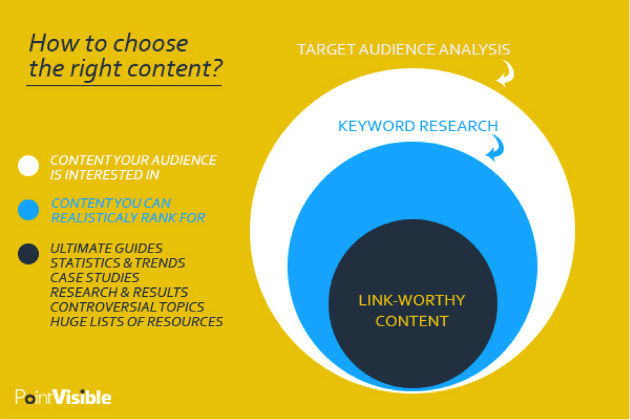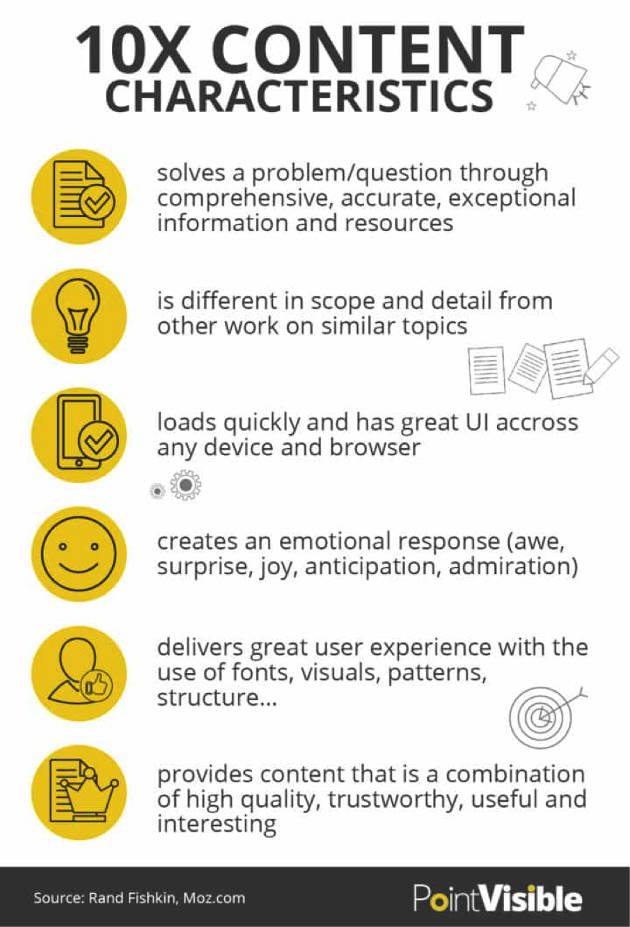Gone are the days of keyword-rich anchor text, quickly set-up private blog networks (PBNs), and 500-word articles. Google's algorithm becomes more sophisticated every day, and the competition in content marketing has never been fiercer.
Methods like guest posting are still a viable way to raise brand awareness, brand authority, and domain rating, but they can get you only so far. You can never reach the authority levels of top sites in any niche by relying only on outreach.
A recent study from SEMRush concludes that traffic and time spent on site have a significant impact on search result rankings, which complicates matters even more.
What should you focus on: Increasing traffic to your website? Getting more backlinks? Reducing your bounce rate?
Or... you could do all of that with the same piece of content.
How? It's easy (in theory)—by creating engaging content worth linking to.
Choose the right content
Not all topics are created equal.
Featuring the best resource list of add-ons for Internet Explorer used to be awesome, but that isn't something that will bring you much value today.
That is why your topics should go through a thorough vetting process based on your target audience research, keyword research, and some other conditions this article will discuss later on.
Research comes first
Any smart content marketing strategy is not complete without an in-depth target audience analysis and proper keyword research. The same practices apply here:
- If you plan to invest your time and money, you'd better make sure that the content you're creating attracts the right people.
- Keyword research, as always, is needed to see what keywords you can realistically rank high enough to actually be seen by your target audience.
After your audience and keyword analyses, you'll need to check available content related to the topic you are planning to cover. If, for example, you want to create an "Ultimate Guide to Influencer Marketing," and there is already a high-quality post from this year with 200 backlinks called "The Definitive Guide to Influencer Marketing," then you might want to cover another topic area.
Choose link-worthy content
To get a better sense of what content is link-worthy, put yourself in the shoes of someone who is writing an article covering any topic in a selected niche.
It doesn't matter whether that person is writing a piece for their own blog or a guest post; the types of content s/he is going to be the most inclined to mention are...
- Articles that cover statistics or trends in your industry
- In-depth guides that add value to your piece
- Long lists (50 or more items) of resources
- Case studies
- Research and results
- Controversial opinions that have a fresh perspective
Those are not the only types of content that can work, of course. However, they are the safest choices to start with.
Try not get stuck on a single content type. You don't have to limit yourself to just written posts. Infographics and videos can also work well. Even some interactive content, such as a quiz, calculator, or a generator, can serve the same purpose. (However, developing interactive content brings its own challenges.)
Here is a graphic that shows you how to zero in on the right topic:

Don't compromise on quality
Avoid any shortcuts in the content development phase: Take the time to conduct due-dilligence to ensure that the content you create will be useful for your audience (which will then be more likely to share your content). You don't want to invest resources into creating content that doesn't serve its purpose. Moreover, when you create high-quality content, you'll dissuade your competition from challenging you on the topic you create content about. You want to have content so good that competitors either can't do a better job covering the subject area or won't want to invest so many resources into creating and promoting it because the effort just wouldn't be worth it.
That is why some longer guides from top marketing sites remain in the top 3 search results for a couple of years—or even longer. However, if you want to follow in their footsteps, be ready to update your content on a regular basis.
To ensure the quality of your content, your best bet is to follow the principles behind 10x content:

Here are some other useful guidelines to follow, especially if you're creating long-form content (3,000+ words):
- Content needs to have a good flow. It has to be easy to read and digest.
- The structure has to make sense. It has to be easy to follow. Implementing some sort of content table to improve navigation is almost unavoidable.
- It has to be visually appealing. Colors, contrast, spacing, and visuals all matter.
- It works best when you are experienced in the subject matter. With less need for research, and with the ability to give personal insights and tips you've picked up, it's more likely you will actually sound like an expert worth listening to.
- Concentrate on evergreen topics. If I haven't been clear so far, this is a long-term play. Unless you have a really good reason for doing otherwise, you don't want to invest in content that won't be relevant in a few months or can't be easily updated.
Remember promotion
Although I mentioned earlier that you can't rely only on outreach to promote your content, the reality is that even engaging, link-worthy content requires promotion, at least until you are able to rank reasonably high in search.
Your content needs to be visible, which is why you need to increase its ranking for selected keywords. And outreach is one of the best ways to do that.
In addition, promote your content on social media, and contact influencers and blogs that might be interested in sharing it on their social channels. Even if you don't get a link right away, bringing awareness to your awesome piece of content will bring you closer to your goal.
* * *
An investment in link-worthy content on your website is actually an investment in a long-term asset that will drive steady traffic to your site for years to come and engage your audience in a way that makes them want to stay longer and see what all the buzz is about.




